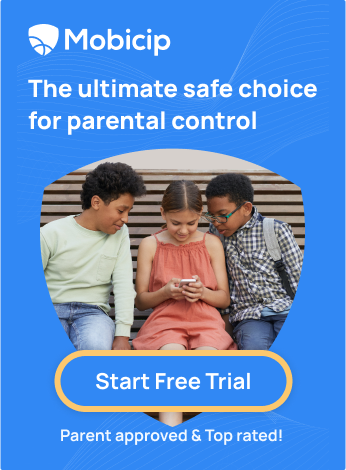AI and Education: Practical Tips for Parents

AI is reshaping education in ways that once seemed like science fiction—a concept Isaac Asimov explored in his short story The Fun They Had. The tale is set in the year 2157, about an 11-year-old girl named Margie and her neighbor Tommy, who discover an old-fashioned printed book. It fascinates them because, in their time, learning is entirely digital, delivered through individualized robotic teachers at home. Margie envies the idea of a traditional school where children learn together, rather than in isolation with their mechanical instructors.
While we may not have fully automated robot teachers yet, AI-powered platforms personalize lessons, provide instant feedback, and adapt to each student’s needs. Virtual assistants help with homework, chatbots tutor struggling students, and algorithms recommend educational content. While these tools enhance learning, they also raise concerns—children may become overly reliant on technology, miss out on social learning experiences, and struggle to understand the biases and limitations of AI-generated information.
This is where parental involvement becomes imperative. Parents need to guide their children in using Artificial Intelligence tools responsibly, ensuring they think critically about the information they receive, balance screen time, and engage in real-world learning. Without oversight, kids may passively accept AI-driven recommendations without questioning their accuracy or intent.
This article discusses the role of Artificial Intelligence in children’s education, what parents can do to make it useful and not disruptive, and how Mobicip can help in this regard.
Understanding AI in Education
Artificial intelligence refers to computer systems that can perform tasks requiring human intelligence, such as problem-solving, learning, and decision-making. In education, it enhances learning by personalizing instruction, automating administrative tasks, and providing real-time feedback. It adapts to students’ needs, helping them learn at their own pace while offering teachers valuable insights into student progress.
How AI is Transforming Traditional Learning
Traditional education follows a one-size-fits-all approach, but AI is changing this by making learning more personalized and interactive. Smart platforms analyze student performance and tailor lessons accordingly, ensuring that each child gets the right level of challenge and support. Automated grading and administrative assistance also free up teachers to focus on meaningful interactions with students. Artificial Intelligence tools also enable access to education for students with disabilities by offering speech-to-text, text-to-speech, and other assistive technologies.
Common AI Tools in Education
- Adaptive Learning Platforms – Tools like DreamBox and Knewton alta adjust content based on a student’s strengths and weaknesses.
- Virtual Tutors – Artificial Intelligence-powered tutors like Khan Academy and Duolingo provide instant feedback and step-by-step explanations.
- Chatbots for Student Support – AI chatbots answer common questions, helping students with assignments and administrative queries.
- Speech and Language Processing – Tools like Google’s Read Along and Grammarly assist with reading comprehension and writing skills.
- AI-Assisted Content Creation – Platforms like ScribeSense automate grading, while AI-powered note-taking apps help students organize their learning materials.
Benefits of AI for Kids’ Education
AI can be a powerful ally in education. Here are some of its benefits:
Personalized Learning
AI adapts educational content to match each child’s learning style and pace. Unlike traditional classrooms that follow a set curriculum, AI-powered platforms analyze a student’s strengths and weaknesses, adjusting lessons accordingly. For example, adaptive learning tools like DreamBox and Knewton modify math problems based on a child’s performance, ensuring they receive the right level of challenge without feeling overwhelmed or bored.
Instant Feedback
One of AI’s biggest advantages is real-time feedback, which helps children learn from mistakes immediately. Instead of waiting for teachers to grade assignments, Smart tutors like Khan Academy and Duolingo provide instant corrections and explanations. This immediate response allows students to adjust their approach, reinforcing concepts before moving forward. Instant feedback also reduces frustration and boosts confidence, making learning a more positive experience.
Support for Learning Differences
AI tools play a crucial role in supporting children with learning differences such as ADHD, dyslexia, and autism. Speech-to-text and text-to-speech applications, like Google’s Read&Write, help dyslexic students read and write more effectively. AI-driven focus tools, such as Brain.fm, assist children with ADHD by using soundscapes to improve concentration. These technologies create a more inclusive learning environment, helping all students succeed.
Enhanced Engagement
Gamification and interactive Artificial Intelligence-driven tools make education more engaging. Apps like ABCmouse turn lessons into games, keeping children motivated through rewards and challenges. Virtual reality (VR) learning, powered by AI, immerses students in interactive experiences, such as exploring ancient civilizations or conducting virtual science experiments. By making learning fun, AI encourages curiosity and sustained interest in education.
24/7 Learning Support
AI-powered learning tools are available anytime, allowing children to study at their own convenience. Unlike human teachers with limited availability, AI tutors like ChatGPT, Socratic by Google, and Duolingo provide explanations and guidance whenever needed. This flexibility helps kids reinforce learning outside of school hours.
Bridging Educational Gaps
AI makes quality education accessible to students regardless of location or economic background. Free AI-driven platforms like Khan Academy and Google’s Read Along provide personalized instruction to children who might not have access to private tutoring. AI can also translate lessons into different languages, helping non-native speakers and children in underserved communities.
Improved Study Habits and Time Management
AI tools help children develop better study habits by tracking progress, setting reminders, and suggesting optimal learning schedules. AI-powered planners analyze students’ workloads and recommend structured study plans, reducing last-minute cramming and promoting consistency.
Addressing Concerns About AI in Education
As AI becomes more integrated into children’s education, parents have valid concerns about its impact. Issues such as privacy, exposure to inappropriate content, over-reliance on technology, and bias in AI algorithms must be carefully managed to ensure a safe and balanced learning experience.
Privacy and Security
AI-powered educational tools collect data on students’ learning patterns, progress, and personal details. Protecting this information is crucial to prevent misuse or data breaches. Parents should choose platforms with strong encryption, minimal data collection, and clear privacy policies. Teaching children about online privacy and responsible digital behavior is also essential.
Inappropriate Content
AI-driven search engines and learning platforms may sometimes display or recommend content that is not suitable for children. While AI tools often have built-in filters, they are not always perfect. Parents should enable safety features like content restrictions and kid-friendly search settings while actively monitoring their child’s online activities. Open conversations about safe Internet use can also help children make responsible choices.
Dependency on Technology
Artificial Intelligence tools offer personalized learning and instant feedback, but over-reliance on it can reduce critical thinking and social interaction. Children may start depending too much on AI for answers instead of developing problem-solving skills. To prevent this, parents should encourage a mix of AI-assisted learning and traditional methods, such as reading books, engaging in discussions, and participating in hands-on activities. Setting screen time limits and promoting offline learning experiences can help maintain this balance.
Bias and Misinformation
Machine Learning algorithms can reflect biases present in the data they are trained on, leading to skewed recommendations or misinformation. Parents and educators should encourage children to think critically about AI-generated content, verify facts from reliable sources, and develop media literacy skills.
How Parents Can Help Children Use AI Responsibly
AI has immense potential to enhance children’s learning, but responsible use is key to ensuring it remains a helpful tool rather than a risk. Parents play a crucial role in guiding their children’s interaction with AI and fostering healthy digital habits.
Educate Children About AI
Children should understand that AI is not infallible. Parents can explain how Artificial Intelligence approaches like Machine Learning work, including their limitations, potential biases, and the importance of verifying algorithm-generated information. Teaching kids to fact-check and think critically about AI-driven recommendations helps them become more responsible digital learners.
Set Guidelines for AI Usage
Establishing clear rules about when, where, and how artificial intelligence tools can be used prevents over-reliance. Parents can create a balance between AI-assisted learning and traditional educational activities. Setting screen time limits and encouraging breaks from digital devices ensures children do not become overly dependent on AI tools.
Encourage a Balanced Learning Approach
While Artificial Intelligence tools can personalize education, it should complement—not replace—traditional learning methods. Parents can encourage reading physical books, engaging in hands-on activities, and having discussions that develop critical thinking and problem-solving skills. A mixed approach helps children retain creativity and curiosity.
Monitor and Guide AI Interactions
Parents should be aware of the Artificial Intelligence tools their children use, whether it’s a virtual tutor, a chatbot, or an adaptive learning platform. Regularly reviewing the content and functionality of these tools ensures they are safe and appropriate. Open conversations about online experiences help children feel comfortable seeking guidance when needed.
Promote Ethical AI Use
Artificial Intelligence tools should be used responsibly and ethically. Parents must teach children about data privacy, encourage them to ask for permission before sharing personal information online, and discuss the impact of AI-generated content. Responsible AI use helps children develop good digital citizenship skills.
The Role of Mobicip in Safe AI Usage
AI-driven educational tools offer numerous benefits, but they also come with risks, such as exposure to inappropriate content, overuse, and data privacy concerns. Mobicip enables parents to monitor their children’s digital activities, ensuring they engage with Artificial Intelligence tools safely and productively. With real-time reports and insights, parents can track screen time, website visits, and app usage, helping them make informed decisions about their child’s online learning habits.
Key Features for Safe AI Usage
- Content Filtering: AI-generated content is not always age-appropriate or reliable. Mobicip’s advanced content filtering system blocks harmful websites, inappropriate videos, and risky online interactions, ensuring children access only safe and educational material.
- Screen Time Management: Artificial Intelligence tools can be engaging, but excessive screen time can negatively impact children’s development. Mobicip allows parents to set daily screen time limits, schedule device-free periods, and encourage a healthy balance between online and offline activities.
- App and Website Blocking: Some smart platforms may not align with a family’s values or safety concerns. Mobicip lets parents block or restrict access to specific apps and websites, giving them full control over their child’s digital environment.
- Safe Search and Video App Monitoring: AI-driven recommendations can sometimes lead children to inappropriate or misleading content. Mobicip enforces safe search filters and monitors YouTube and other streaming video app activities to ensure kids consume age-appropriate, educational videos.

Conclusion
Today, as Artificial Intelligence takes on a growing role in education, we find ourselves at crossroads. The technology is powerful, adaptive, and convenient—but it lacks the warmth of human connection, the spontaneity of a classroom discussion, and the spark of curiosity ignited by a great teacher. AI can analyze, recommend, and personalize, but it cannot inspire in the way that a mentor or a lively debate can.
Perhaps the real lesson from Asimov’s story is not ony about the tools we use but about the learning experience itself. Artificial Intelligence should not replace the human elements of education—it should enhance them. The goal is not to let children learn in isolation, guided only by algorithms, but to use AI as a bridge to deeper understanding, critical thinking, and collaborative learning. If we strike the right balance, Artificial Intelligence tools can become what they are meant to be: not a substitute for education but a catalyst for learning.





